Mystery Of The Giant Hand At The Temple Of Hercules
Ellen Lloyd - AncientPages.com - One glance at the giant hand is enough to recognize it was once part of a true masterpiece created by ancient builders. The hand belonged most likely to a massive statue of Hercules himself.
Partial view of the giant hand of Herkules. Credit: Jeanhousen - CC BY-SA 3.0
How and why the giant statue of Hercules was destroyed is unclear, but we can assume it was due to the region's periodic catastrophic earthquakes.
There are many stories of Hercules, the Greek hero who was the son of Zeus. Whether he existed or not is unknown, but since he was worshipped in many temples all over Greece and Rome, one can suspect he was a real being.
The Temple Of Hercules, situated in the Forum Boarium on the eastern bank of the Tiber, is one of the oldest extant buildings in Rome, Italy. Constructed between 162-166 CE during Marcus Aurelius' Roman occupation of Amman's Citadel, the temple is purported to be the work of the Greek architect Hermodoros of Salamina. They engineered a circular layout of 20 Corinthian columns orbiting around a central cylindrical stone block.
In ancient times, it was a vast place of worship. The great temple is more extensive than any in Rome itself.
Its entrance faces east and is surrounded by six 33-foot-tall columns. Measuring 100-feet-long by 85-feet-wide with an outer sanctum of 400 by 236 feet, the fact that the rest of the temple remained unadorned by columns suggests to scholars that the structure was never completed for reasons history has yet to reveal.
These fingers obviously belong to Hercules. Credit: Ken and Nyetta - CC BY 2.0
When archaeologists excavated the site, they discovered very few clues that could shed more light on why the mysterious and giant Temple of Hercules and the massive statue were destroyed. This abandoned place was once of great importance, but very little is known about its past.
The three gigantic fingers, one elbow, and some scattered coins have led archaeologists to conclude that these marble body parts belonged to Hercules himself, a massive statue of Hercules himself. It is, therefore, logical to assume that the temple was also dedicated to him.
If the remarkable statue had survived, it would have measured upwards of 40 feet high, which would have placed it among the largest known marble statues to have ever existed.
The mighty statue of Hercules is gone, but the marble components of the Temple of Hercules have endured considerable deterioration over the two millennia. In 1996, the Temple of Hercules was placed on the World Monuments Watch.
Written by Ellen Lloyd – AncientPages.com
Updated on January 23, 2024
Copyright © AncientPages.com All rights reserved. This material may not be published, broadcast, rewritten or redistributed in whole or part without the express written permission of AncientPages.com
More From Ancient Pages
-
 Jure Grando – First ‘Real’ Historical Vampire Case Documented
Featured Stories | Jun 16, 2021
Jure Grando – First ‘Real’ Historical Vampire Case Documented
Featured Stories | Jun 16, 2021 -
 On This Day In History: ‘Battle On The Ice’ – Army Of Prince Nevsky Against Teutonic Knights Was Fought – On Apr 5, 1242
News | Apr 5, 2016
On This Day In History: ‘Battle On The Ice’ – Army Of Prince Nevsky Against Teutonic Knights Was Fought – On Apr 5, 1242
News | Apr 5, 2016 -
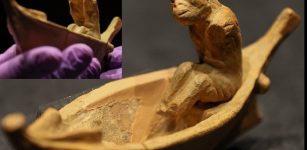 The 2,400-Year-Old Figurine Of Charon -The Ferryman Of The Dead – On Display In Izmir, Turkiye
Archaeology | Nov 21, 2022
The 2,400-Year-Old Figurine Of Charon -The Ferryman Of The Dead – On Display In Izmir, Turkiye
Archaeology | Nov 21, 2022 -
 Mystery Of The Knights Templar – Did A Secret Ancient Meeting Determine The Real Purpose Of The Christian Knights? Part 1
Featured Stories | Aug 20, 2019
Mystery Of The Knights Templar – Did A Secret Ancient Meeting Determine The Real Purpose Of The Christian Knights? Part 1
Featured Stories | Aug 20, 2019 -
 Ancient Secrets Of John Dee And The Enochian Apocalypse Examined
Featured Stories | Jul 8, 2015
Ancient Secrets Of John Dee And The Enochian Apocalypse Examined
Featured Stories | Jul 8, 2015 -
 Buccaneers And Privateers Were Pirates – But What’s The Difference Between Them?
Ancient History Facts | Nov 5, 2016
Buccaneers And Privateers Were Pirates – But What’s The Difference Between Them?
Ancient History Facts | Nov 5, 2016 -
 Strange Encounter With A Dead Medieval Army In Normandy – Or Were They Visitors From A Parallel World?
Featured Stories | Nov 5, 2017
Strange Encounter With A Dead Medieval Army In Normandy – Or Were They Visitors From A Parallel World?
Featured Stories | Nov 5, 2017 -
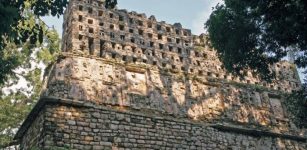 On This Day In History: Mayan King Bird Jaguar IV Assumes The Throne – On May 3, 752
News | May 3, 2016
On This Day In History: Mayan King Bird Jaguar IV Assumes The Throne – On May 3, 752
News | May 3, 2016 -
 How Many Ice Ages Has The Earth Had, And Could Humans Live Through One?
Featured Stories | Sep 26, 2022
How Many Ice Ages Has The Earth Had, And Could Humans Live Through One?
Featured Stories | Sep 26, 2022 -
 Riddle How Human’s Uniquely DNA Evolved Solved By Scientists
DNA | Jan 13, 2023
Riddle How Human’s Uniquely DNA Evolved Solved By Scientists
DNA | Jan 13, 2023 -
 Strange Ancient Accounts Of Fourth Dimensional Phenomena
Featured Stories | Jun 7, 2018
Strange Ancient Accounts Of Fourth Dimensional Phenomena
Featured Stories | Jun 7, 2018 -
 Hogmanay: Scotland’s New Year Celebration Inherited From The Vikings
Ancient Traditions And Customs | Dec 31, 2016
Hogmanay: Scotland’s New Year Celebration Inherited From The Vikings
Ancient Traditions And Customs | Dec 31, 2016 -
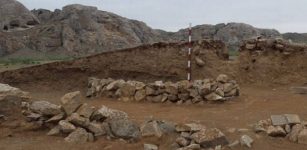 ‘Sophisticated’ 4,000-Year-Old Steppe Pyramid Discovered In Kazakhstan
Archaeology | Aug 12, 2023
‘Sophisticated’ 4,000-Year-Old Steppe Pyramid Discovered In Kazakhstan
Archaeology | Aug 12, 2023 -
 Mystery Of The Ancient Reptilian Gods Remains A Complex Subject – Alien Worlds – Part 2
Featured Stories | Feb 9, 2022
Mystery Of The Ancient Reptilian Gods Remains A Complex Subject – Alien Worlds – Part 2
Featured Stories | Feb 9, 2022 -
 Mysterious Advanced Underground Civilization And A Secret Society – Astonishing Discovery And Connection – Part 1
Civilizations | Apr 21, 2018
Mysterious Advanced Underground Civilization And A Secret Society – Astonishing Discovery And Connection – Part 1
Civilizations | Apr 21, 2018 -
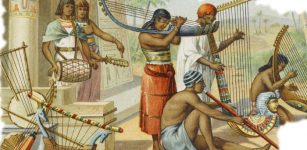 How Important Was Music In Ancient Egypt?
Ancient History Facts | Jan 16, 2021
How Important Was Music In Ancient Egypt?
Ancient History Facts | Jan 16, 2021 -
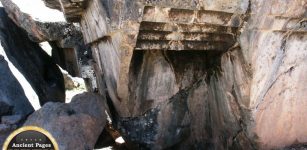 Enigma Of Ancient Upside Down Stairs At Sacsayhuamán
Featured Stories | May 27, 2014
Enigma Of Ancient Upside Down Stairs At Sacsayhuamán
Featured Stories | May 27, 2014 -
 Ancient DNA Shows Neanderthals Used Plant-Based Medicine To Treat Pain And Illness
Archaeology | Mar 9, 2017
Ancient DNA Shows Neanderthals Used Plant-Based Medicine To Treat Pain And Illness
Archaeology | Mar 9, 2017 -
 Ancient DNA Reveals Unknown Genetic Exchanges Between North And South America
Archaeology | Nov 12, 2018
Ancient DNA Reveals Unknown Genetic Exchanges Between North And South America
Archaeology | Nov 12, 2018 -
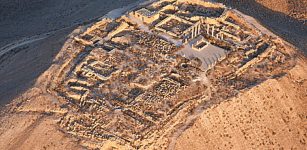 The 2,000-Year-Old Citadel Of Machaerus – A New Look For An Ancient Site
Civilizations | Oct 30, 2015
The 2,000-Year-Old Citadel Of Machaerus – A New Look For An Ancient Site
Civilizations | Oct 30, 2015


